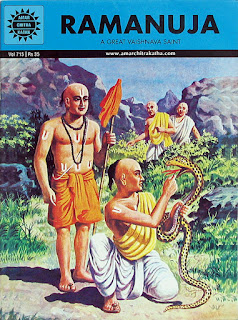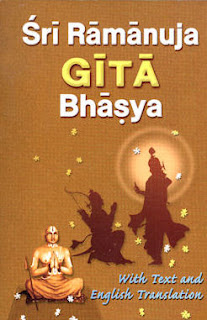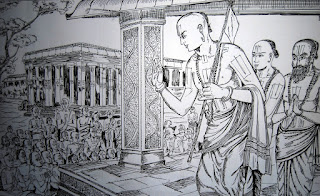
(1) Penitencefor Pride--- As told by Mukulbhai Kalarthi, Ahmedabad
Ramanujacharyalived in Tamil Nadu and Karnataka between 1017 AD and 1137 AD. He lived for 120years.
Onaccount of old age the renowned Vaishnava preceptor and propounder of thephilosophy of Vishistadwaita (Qualified Monism), Ramanuja had become very weak.Therefore, while going to the river for his daily bath he had to take the helpof someone.
Going tothe river he would rest his hand on the shoulder of one of his Brahmindisciples. But while returning home, he took the help of a disciple, belongingto the lowest caste Shudra.
Theorthodox people were greatly perturbed at this peculiar behaviour of thepreceptor. Therefore one day some of them got together and went to Ramanuja andsaid to him, “Revered teacher, should you desire, you can take the help of theuntouchable disciple before your bath. But once after the bath you have madeyourself clean, you ought not to touch him”.
Thepreceptor replied, “Brothers, I place my hand on the shoulder of him, whom youconsider an untouchable, after my bath, only to wash away the dirt of pride,which still sticks to me because of my belonging to the so called highestcaste. And this dirt cannot be washed away with mere water!”

(2) Storyof Kanchipurna (Thiru Kachi Nambi)-- As told by Swami Sivananda
“One ofRamanuja’s disciples, by name Kanchipurna, was serving in the temple atKancheepuram. Although a Shudra, Kanchipurna was so very pious and good thatthe people of the place had great respect and reverence for him. At present,there is a temple at Kancheepuram where Kanchipurna's image has been installedand where he is worshipped as a saint.
YoungRamanuja came under Kanchipurna's influence and had such reverence for him thathe invited him to dinner in his house. Ramanuja's intention was to attend onKanchipurna and personally serve him at dinner and himself take mealsafterwards. Unfortunately, Kanchipurna came to dinner when Ramanuja was not athome, and took his meals being served by Ramanuja's wife. When Ramanujareturned home, he found the house washed and his wife bathing for having servedmeals to a Shudra. This irritated Ramanuja very much and turned him against hiswife who was an orthodox lady of a different social ideal. After a fewincidents of this nature, Ramanuja abandoned the life of a householder andbecame a Sannyasin”--- Swami Sivananda of Divine Life Society

(3) Acmeof Compassion –As told by Swami Ramdas of Anandashram
“Youmust have heard of the three great teachers : Shankara, Ramanuja and Madhwa.They have established their systems of philosophy in India. Ramanuja went to aMaster and asked him to initiate him. The Master gave him God’s name and alsoadvised him not to give this NAME to anybody, adding if he did so, he would goto hell. At once Ramanuja went to the top of the local temple (at SriPerumpudur near Madras) and shouted, “ I am going to give you all a NAME whichwill save you. My master has given me that Name”. He uttered the name loudly sothat everybody could here.
(God’sname he uttered was OM NAMO NARAYANA)
TheMaster heard about it and asked why he did so in spite of his warning.Ramanuja’s reply was, “I am prepared to go to hell a hundred times if I cansave thousands”.
